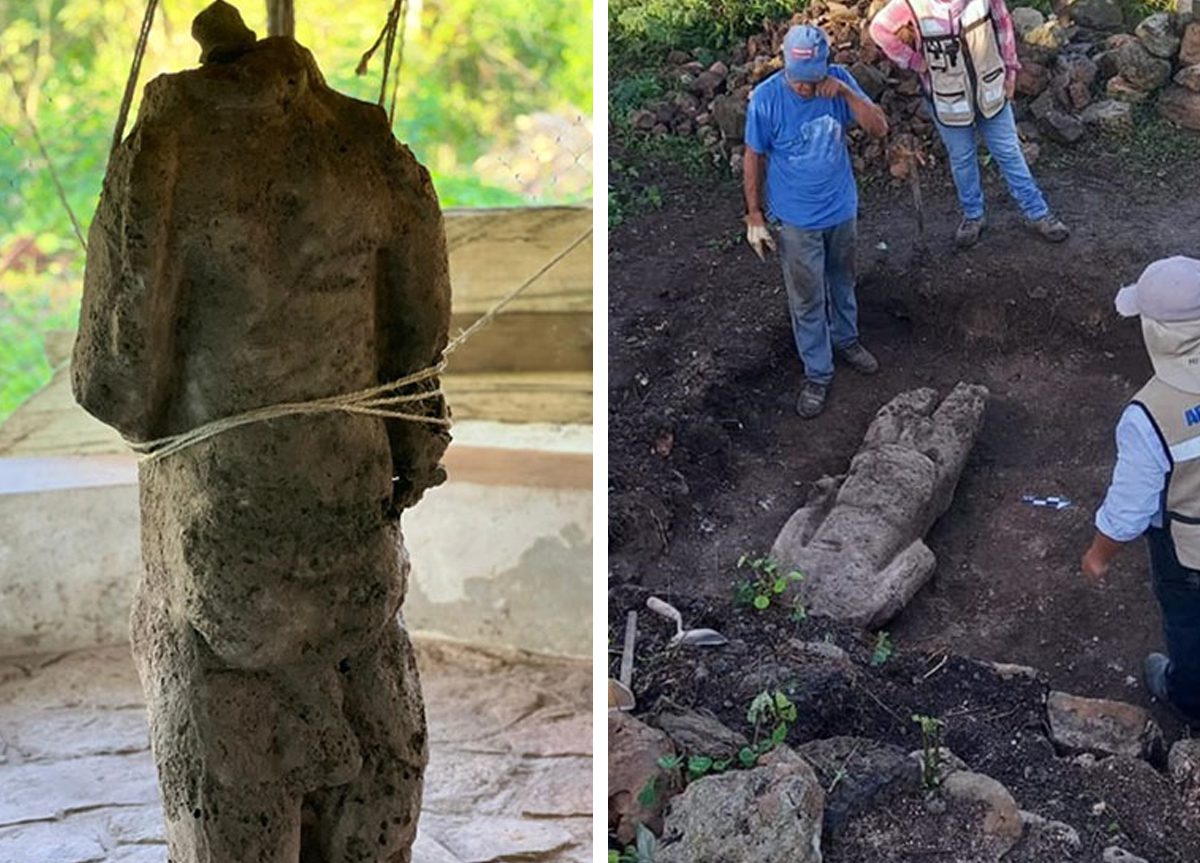Archaeologists from the National Institute of Anthropology and History (INAH) have uncovered a headless statue at the Maya city of Oxkintok.
Oxkintok is located in the Puuc region on the north-western tip of the Yucatán Peninsula, Mexico.
Evidence of habitation at Oxkintok first dates from the Late Pre-Classic, with ongoing settlement through to the Late Post-Classic periods.
Oxkintok emerged as a major centre during the Early Classic and Terminal Classic periods (also called the Middle Classic), where the inhabitants constructed large pyramids and decorated their city with an abundance of richly detailed iconography and hieroglyphics.
The city was abandoned sometime around AD 1500, indicated by a disappearance in human activity in the archaeological record, although the cause for the decline at Oxkintok is inconclusive as there is no evidence that warfare or famine caused the abandonment.
During excavation work for the Maya Train, a 1,525-kilometre intercity railway in Mexico that will traverse the Yucatán Peninsula, researchers found a headless life-size Maya statue.
Nicknamed “Yum keeb” — the god of the phallus or fertility, the statue is made from limestone and measures 1.65 metres tall. The statue was possibly used as an offering to the gods and was found lying on his back near a hieroglyph-laden staircase that was being cleaned and restored. Experts believe that the statue represents a human figure and depicts a prisoner of war captured in conflict.
In Maya culture, warfare between Maya cities was mainly for political control/influence, or for gaining new resources and territory. The goal may also have been to acquire sacrificial victims to legitimise the ruler of a polity, or to intimidate rivals into submission and tribute. Generally, only high-status prisoners of war were sacrificed, with lower status captives being used for labour.
During a press conference by INAH, archaeologists also announced that a survey which extends 254 kilometres, also detected more than 1,730 pre-Hispanic constructions, ranging from simple domestic architecture to monumental constructions for civil and ceremonial activities.
Header Image Credit : INAH





